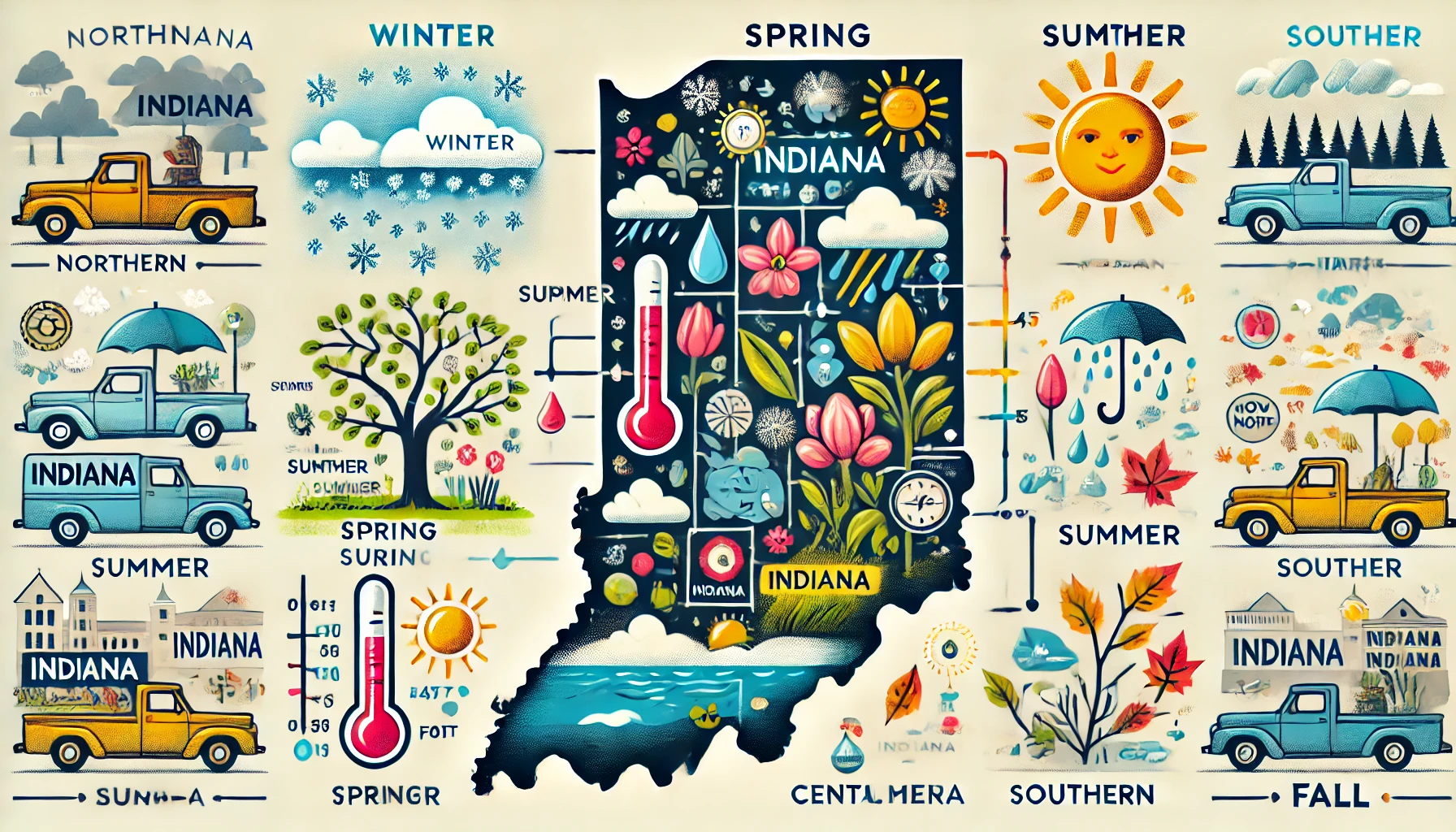When people think of Indiana, they often envision its vibrant cities, expansive farmlands, and the iconic Indianapolis 500. However, understanding the average temperatures in Indiana is essential for both residents and visitors. Knowing what to expect weather-wise can significantly enhance your experience in the Hoosier State, whether you’re planning a summer vacation, moving to Indiana, or simply curious about the climate.
Understanding Indiana’s Climate
Indiana’s climate can be described as humid continental, which means it experiences four distinct seasons with considerable temperature variations throughout the year. The state’s geography, spanning from the southern shores of Lake Michigan to the rolling hills of the south, contributes to these diverse weather patterns.
Winter Temperatures in Indiana
Winter in Indiana is typically cold and can be quite snowy, especially in the northern regions. Average temperatures in Indiana during the winter months of December, January, and February range from about 20°F to 40°F. Northern Indiana tends to be colder due to the influence of Lake Michigan, which can bring lake-effect snow and frigid winds.
Residents in cities like South Bend and Fort Wayne often experience lower temperatures compared to those in southern cities like Evansville. It’s not uncommon for temperatures to drop below 0°F during particularly harsh winter storms, but these extreme lows are usually brief.
Spring Temperatures in Indiana
Springtime in Indiana sees a gradual warming trend from March through May. Early spring can still be chilly, with average lows in the 30s°F, but by May, temperatures typically range between 50°F and 70°F. This season is known for its unpredictable weather, as warm and cold air masses clash, leading to frequent rain showers and sometimes severe thunderstorms.
During spring, the landscape comes alive with blooming flowers and budding trees, making it a beautiful time to explore Indiana’s parks and natural areas. However, it’s wise to keep an umbrella handy due to the frequent spring rains.
Summer Temperatures in Indiana
Summer in Indiana is warm and humid, with average temperatures ranging from 70°F to 85°F. July is usually the hottest month, with temperatures occasionally reaching into the 90s°F. The southern parts of Indiana, particularly areas near the Ohio River, tend to be warmer than the northern regions.
Humidity levels can be quite high, making it feel even hotter. This is the perfect season for outdoor activities like boating on Indiana’s many lakes, visiting amusement parks, or attending one of the numerous summer festivals held across the state. However, be prepared for the occasional heatwave, and always stay hydrated.
Fall Temperatures in Indiana
Fall is arguably one of the most pleasant seasons in Indiana. From September through November, temperatures gradually cool from the summer heat, with averages ranging from 50°F to 70°F. Early fall can still feel quite warm, but by October, the crisp, cool air sets in, making it a perfect time for outdoor activities like apple picking, hiking, and enjoying the vibrant fall foliage.
The state’s varied landscape becomes a canvas of reds, oranges, and yellows, attracting visitors from all around to witness the breathtaking fall colors. This season also tends to be less humid than summer, offering more comfortable conditions for outdoor adventures.
How Geography Affects Temperatures in Indiana
Indiana’s geographic diversity plays a significant role in its weather patterns. The northern part of the state, influenced by Lake Michigan, often experiences cooler temperatures and more snowfall in the winter. Conversely, the southern part of the state, closer to the Ohio River, tends to be warmer throughout the year.
Elevation also affects temperatures. The higher elevations in southern Indiana’s hill country can be cooler compared to the lower, flatter northern regions. This variation adds to the state’s unique weather dynamics, making it a fascinating place for meteorology enthusiasts.
Preparing for Indiana’s Weather
Understanding what are the average temperatures in Indiana is crucial for anyone planning to live in or visit the state. Whether you’re bracing for the cold winters, enjoying the mild springs, enduring the hot summers, or relishing the crisp falls, knowing what to expect can help you prepare accordingly.
Winter Tips
- Dress in layers to stay warm and be prepared for sudden temperature drops.
- Keep your home well-insulated to save on heating costs.
- Be cautious when driving in snowy or icy conditions.
Summer Tips
- Stay hydrated and avoid strenuous outdoor activities during peak heat.
- Use air conditioning or fans to stay cool indoors.
- Wear lightweight, breathable clothing to combat humidity.
Conclusion
In summary, what are the average temperatures in Indiana is a question with answers that vary widely depending on the season and location within the state. From frigid winters to hot, humid summers, Indiana offers a full spectrum of weather experiences. By understanding these patterns, you can better plan your activities and make the most of what the Hoosier State has to offer year-round.

